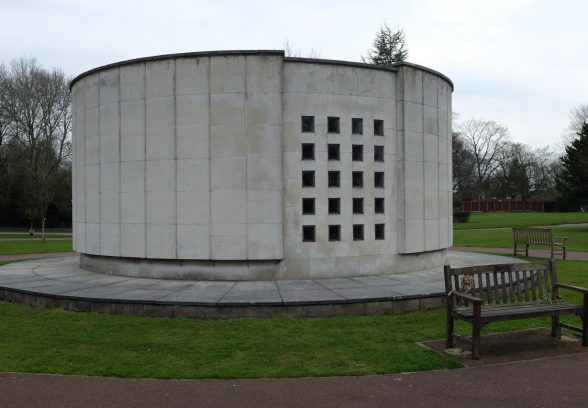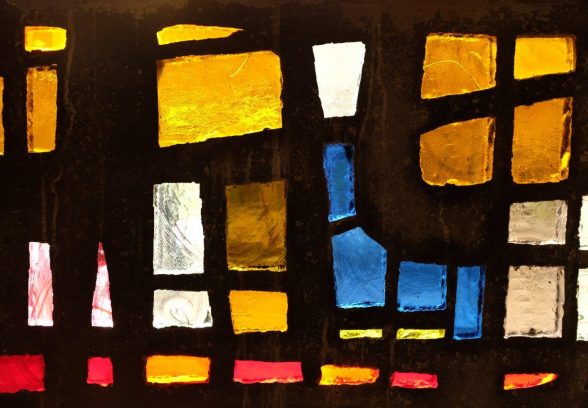This website uses cookies
This website uses cookies to enable it to function properly and to analyse how the website is used. Please click 'Close' to accept and continue using the website.





Dalle de verre stained glass was especially popular in the 1950s and 60s. Usually you’ll find it in churches and cathedrals: think, say, of Le Havre and Coventry. But one of the largest and most impressive secular installations in Britain is the three walled, box-like scheme at St Helens crematorium, Merseyside, the destination for a C20 NW Group trip last April. The cemetery and crematorium has a keen Friends group, whom we met.
St Helens is, of course, a glass-making town, and in 1960 the Council naturally commissioned an excellent scheme by Powell & Sons of Whitefriars, where Pierre Fourmaintreaux worked as a designer. The crematorium’s chapel contains an abstract scheme based on an allegory about the passing and transformation of Life.
The north wall, where coffins enter, depicts a tree in midwinter, contrasting with the south side showing a tree in full bloom. You pass from darkness to light, from Death to Life. Along the west wall there’s a large window of mainly yellow lights representing the (good) Apostles. The entire space is brilliant with colour and light.
Dalle de verre was employed mainly in Britain by James Powell & Sons, later Whitefriars Glass. Dalle is French for slab or tile. Windows are made by the artist assembling small pieces of glass, about one inch thick, which have been carefully chipped and shaped with a tungsten hammer, and setting them in concrete. Traditional stained glass is set in lead. The concrete was reinforced, vibrated and cured to make a resilient and secure frame for the glass. Sometimes this is called ‘faceted’ glass. Later, epoxy resins were introduced, though not at Whitefriars, but this led to problems with windows buckling, heat expansion, and leakages. The effect is to create window panels of extraordinary brilliance and colour.
Pierre Fourmaintreaux (1896-1974) came from Metz in northern France. He moved to Powell’s as their chief designer of slab glass and abstract windows from 1956. His father Gabriel was a well-known ceramicist. He married and settled in Harrow. Whitefriars sadly closed in 1980.
The St Helens installation is still in good condition and well cared for by crematorium staff. The chapel (1959-62) itself is a dignified Portland-stone clad building by local architect Henry Bannister which surprisingly, given the undoubted quality of the glass, is unlisted.
Aidan Turner-Bishop
C20 members visited St Helens Crematorium in April 2016

Become a C20 member today and help save our modern design heritage.
Comments